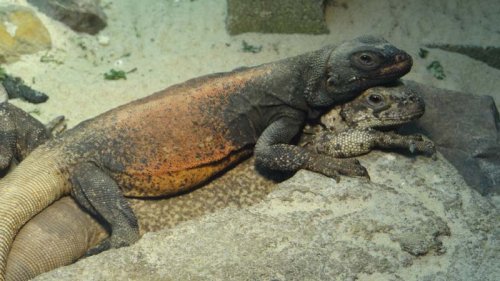pamnsam94
Established Member
Who else keeps these vegetarian desert denizens? These guys are so cool! The male wasn't fully warmed up yet when I took the photo so his red/orange coloration isn't as intense as it sometimes is. I once kept 4 together and I always found it funny the way they stack up on one another, even though there are multiple basking sites. Both readily take flowers and greens out of my hand and will stand up on their hind legs to get to dandelion flowers that I hold between my fingers. Because their care is easier, they sure give me a lot less worry than chameleons, though I love keeping them both. I have 8 eggs cooking right now that are about 60 days away from hatching, a first for me. 
Perry
Perry





